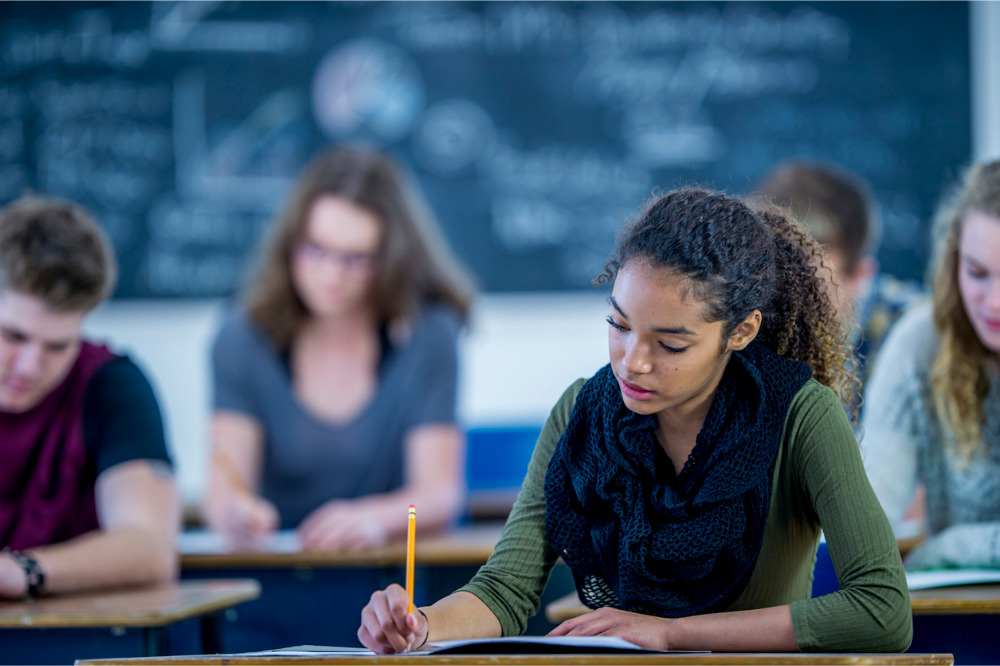
In December, the latest Trends in International Mathematics and Science Study (TIMSS) report revealed that Australia’s high school students achieved their best ever results, finishing in the global top 10.
However, with the data measuring student progress over the last four years up to 2019, the impact of COVID-19 on academic outcomes from 2020 is likely to be significant by the time the next report is released.
In September, a major survey of parents found that 1.25 million Australian students have fallen behind due to the school closures triggered by the pandemic.
With the heavily reliance of schools on technology, many educators have been eager to better understand the ways in which digital learning platforms and resources can be leveraged to improve student outcomes and help them catch up on lost learning.
This week, new research was released showing how technology can be used in maths education to improve student engagement.
The study – led by Associate Professor Catherine Attard from Western Sydney University, along with co-auth Professor Kathryn Holmes, also from WSU – has shown positive results.
“Teaching that combines online and face-to-face learning can break down classroom walls and redefine learning spaces, removing barriers between home and school and making learning more accessible in multiple ways,” A/Prof Attard said.
The researchers conducted four case studies of Australian high school maths classrooms to examine how teachers are using both online and face-to-face practices, and how their students perceive these methods.
Data was drawn from classroom observations, interviews with the teachers and nominated school leaders, and student focus groups. All the students participating in focus group discussions held positive attitudes towards the use of technology in maths education.
“It should be a priority that teachers receive training to develop effective communication techniques required for online learning” said A/Prof Attard.
Opportunities for new ways of teaching
Regardless of the level of access to technological devices – some schools required students to bring their own laptops or iPads; some loaned students devices; and one school struggled just to access the NBN – each teacher found they could use technology to improve their students’ access to mathematics learning resources.
“Online learning resources like GeoGebra or YouTube videos used in conjunction with learning management systems such as OneNote, Canvas or Google Classroom provide opportunities for new ways of teaching,” said A/Prof Attard.
“They help to build connections between teachers and students, teachers and teachers, and teachers, students, and families.”
The study showed that using technology let students work at their own pace, which allowed them to see the “big picture”, because they weren’t restricted to the content being set by the teacher as would happen in a traditional classroom setting. The students were engaged in their learning and could remain on task while working independently.
Teachers noted that using technology meant they could offer easily accessible, timely and personalised assistance to students, for example creating videos discussing individual students’ feedback.
One teacher said “Without those platforms it would be hard for students to actually go home and do what they did in class”.
“If they don’t understand something now, they can go home and redo it. Without the technology that wouldn’t be able to happen,” the teacher said.
Students also reported videos to be more stimulating than traditional texts, and that they appreciated the ability to re-watch the videos.
One student noted that self-paced learning built “the sense of the trust” between them and the teacher, because the student felt responsible for their own learning.
Remote learning not going away anytime soon
Compass CEO, John de le Motte, said the year 2020 highlighted that schools didn’t use a single ed-tech solution to improving the provision of teaching and learning during the pandemic.
“They chose online platforms that worked best for them, in their own context, to help see them through the most adverse impacts of the pandemic,” de la Motte told The Educator.
“We’re now seeing state governments going directly to panel providers, which brings healthy market competition and helps build programs tailored to schools”.
Despite face-to-face classes having resumed in the second half of 2020, de la Motte says he anticipates a 20-30% growth in remote learning in 2021.
“While I think COVID-19 has been a catalyst in terms of the implementation of remote learning this year, there is certainly a demand from parents to get live access to information,” he said.
“Parents want greater visibility in terms of what’s happening inside their child’s classroom – both in receiving more timely feedback and being able to use online apps to monitor their child’s performance”.


